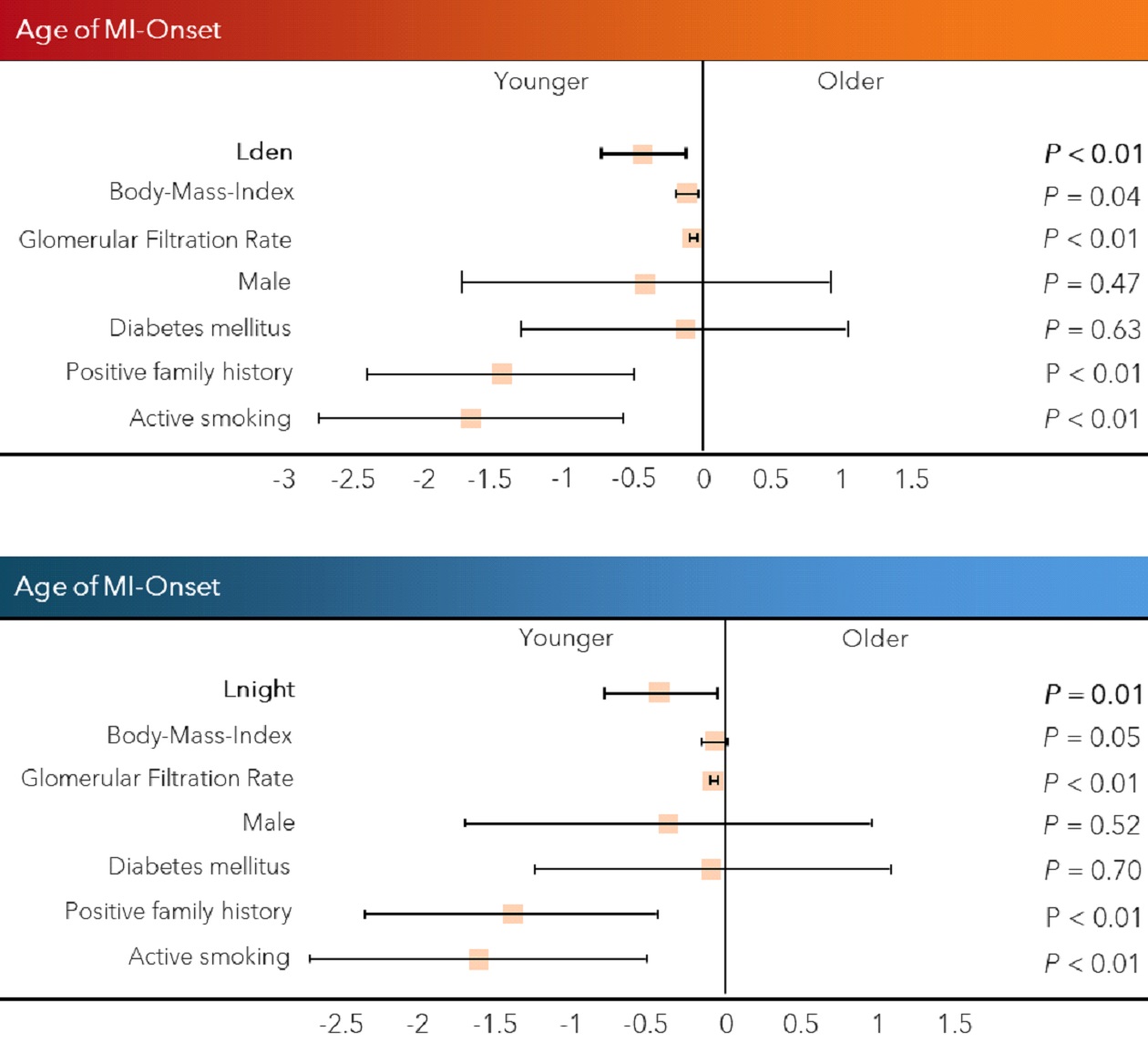https://doi.org/10.1007/s00392-025-02625-4
1Bremer Institut für Herz- und Kreislaufforschung (BIHKF) Bremen, Deutschland; 2Universitätsklinikum Schleswig-Holstein Medizinische Klinik II / Kardiologie, Angiologie, Intensivmedizin Lübeck, Deutschland
Background
Traditional risk factors such as smoking, obesity, and diabetes are crucial in cardiovascular risk assessment, yet exposome-based research emphasizes the significance of environmental exposures. A relevant lack of data exists regarding the impact of noise on early onset of myocardial infarction (MI); this study therefore investigates urban noise pollution and age of onset of MI.
Methods
All consecutive patients aged ≤ 50 years with acute MI who were admitted to the heart center Bremen between 2015 and 2023 and were residing in Bremen were included. The Geoportal Bremen was used to calculate both the daytime (Lden) and nighttime (Lnight) residential noise exposure levels. The association of Lden as well as Lnight with early onset of MI was investigated. A multivariate model on predictors of age of MI, including noise exposure and traditional risk factors was calculated.
Results
A total of 431 patients was included. Patients with high noise exposure had a significantly lower mean age of MI occurrence compared to those with low noise exposure. This result was observed in both Lden (44.6 ± 5.5 vs 46.0 ± 3.6, p < .001) and Lnight (44.5 ± 5.6 vs 45.6 ± 4.0, p < .001).
When stratified by age, younger patients (≤40 years, n=68) had a higher proportion of elevated noise exposure and more intense exposure levels compared to older patients (>40 years, n=363). Among the younger group, 85.3% were exposed to Lden levels ≥55 dB compared to 66.9% in older patients (p < 0.01); similarly, 73.5% had Lnight levels >50 dB versus 55.4% in older patients (p < 0.01). In terms of noise intensity, younger patients exhibited significantly higher exposure. The mean categorized Lden was 2.12 ± 1.53 compared to 1.58 ± 1.49 in the older group (p < 0.01), and the mean categorized Lnight was 1.62 ± 1.34 for those under 40, while it was 1.16 ± 1.27 for the older patients (p < 0.01).
Multivariable logistic regressions analysis revealed that noise exposure (Lden as well as Lnight) was a significant predictor for earlier age of MI onset (Lden p < 0.01, Lnight p = 0.01), alongside other traditional risk factors such as smoking status (p < 0.01), family history of MI (p < 0.01), renal function (GFR) (p < 0.01) and body mass index (p = 0.04) (Figure 1).
Conclusion
Residential noise pollution was associated with earlier age of MI onset. This study underscores that residential noise pollution is a potential independent factor for young age of onset of myocardial infarction, alongside traditional risk factors, such as smoking as well as family history of MI. Efforts to reduce noise exposure should be increased to reduce this modifiable risk factor for MI in young people.
Figure 1: Predictors of Age of Myocardial Infarction Onset in a Multivariable Logistic Regressions Analysis. Upper graph: Model including Lden; Lower graph: Model including Lnight.
